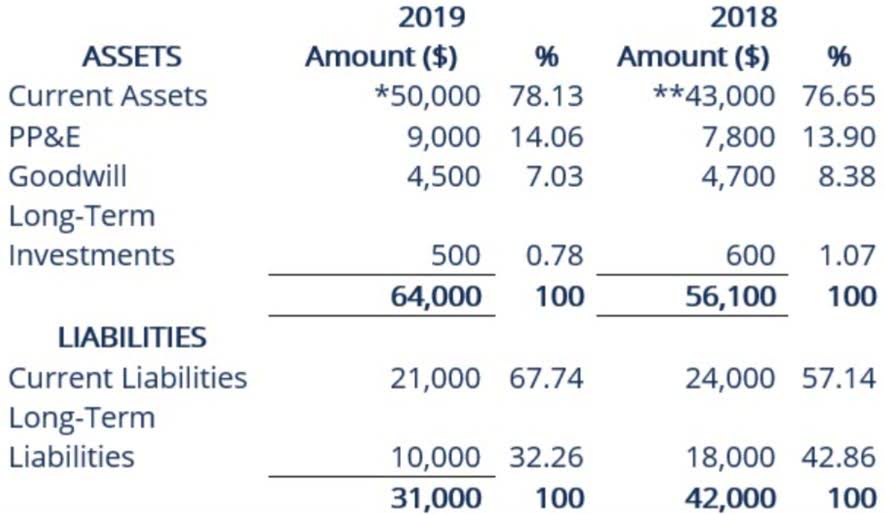Description

By consolidating transaction data from multiple sources, teams can quickly start the reconciliation process with confidence. Bank account reconciliation is comparing your bank statement to your business’s internal list of transactions over a given time period. During bank reconciliation, you’ll compare the two accounts to ensure they reflect the same transaction details and cash flow amounts. If the accounts don’t match, you’ll need to find the source https://www.bookstime.com/industries of the financial discrepancy, repair it, and compare the accounts again to see if they balance. Bank reconciliation is the process of matching a company’s cash records with bank statements to identify discrepancies and ensure accurate financial records.

What Is a Bank Reconciliation Statement?

As outlined bank reconciliation above, bank reconciliations is a process that compares and matches the financial records of a business with the bank statements to ensure they are consistent and accurate. It verifies that all the transactions and purchases shown in the company’s financial records align with those recorded by the bank for the same period. It also helps businesses adhere to necessary accounting standards while additionally supporting your ongoing cash flow management. This is especially useful for large organizations with complex cash transactions.Finally, bank reconciliation is an essential tool in detecting and preventing fraud. If you don’t know what is going in and out of your bank account and how your bank balance fluctuates, you could end up missing vital information.
- Nevertheless, on 5 June, when the bank pays the check, the difference will cease to exist.
- We’ll go over each step of the bank reconciliation process in more detail, but first—are your books up to date?
- Once you’re done comparing the accounts, reconciling any problems, and adjusting your bank and cash balances, there should be an unreconciled difference of $0 between your general ledger and bank statement.
- All such information is provided solely for convenience purposes only and all users thereof should be guided accordingly.
- As a result of these direct payments made by the bank on your behalf, the balance as per the passbook would be less than the balance as per the cash book.
How to resolve an Out of Balance in Bank Reconciliation
Nowadays, many bookkeeping companies use specialized accounting software in bank reconciliation to reduce the amount of work and adjustments required and to enable real-time updates. For finance teams, accurate, timely bank reconciliation is crucial for maintaining reliable financial data and driving confident decision-making. Microsoft Dynamics 365 Business Central’s Copilot Bank Reconciliation feature redefines this process, offering an efficient, automated solution that empowers teams to achieve faster, more precise results.

Ready to Enhance Your Financial Processes?
- These charges won’t be recorded by your business until your bank provides you with the bank statement at the end of every month.
- First, make sure that all of the deposits listed on your bank statement are recorded in your personal record.
- It’s imperative to maintain detailed sets of records of the current reconciliation process and any adjustments made.
- The necessary adjustments should then be made in the cash book, or reported to the bank if necessary, or any timing differences recorded to assist with future reconciliations.
Michelle Payne has 15 years of experience as a Certified Public Accountant with a strong background in audit, tax, and consulting services. She has more than five years of experience working with non-profit organizations in a finance capacity. Keep up with Michelle’s CPA career — and ultramarathoning endeavors — on LinkedIn. However, you typically only have a limited period, such as 30 days from the statement date, to catch and request correction of errors.
- This statement includes all transactions, such as deposits and withdrawals, from a given timeframe.
- Consider reconciling your bank account monthly, whether you set aside a specific day each month or do it as your statements arrive.
- The magic happens when our intuitive software and real, human support come together.
- So it makes sense to record these items in the cash book first in order to determine the adjusted balance of the cash book.
- Chaser’s intelligent solution integrates seamlessly with your accounting system and helps you bring revenue in faster.
- Best practice states you should reconcile your bank accounts at least every month and produce bank reconciliation statements to highlight the adjusted bank balance or internal records.

It’s also the foundation of small-business accounting and bookkeeping, so you’ll want to familiarize yourself with the process as soon as possible—you’ll be doing it pretty often. Ongoing bank reconciliations are conducted more frequently, such as weekly or even daily, to maintain real-time accuracy in financial records. These reconciliations typically involve live transaction matching between an accounting system and a live feed from a financial institution, and reduce the risk of errors and fraud. They will ensure all is as it should be and no data is incorrect or missing.


